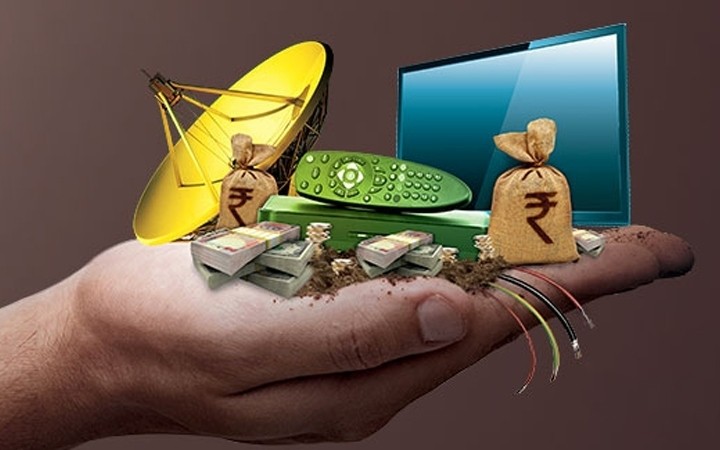
As Indian pay-TV concludes the first two phases of a government mandate to upgrade to digital signals, close to 25 million homes have already been seeded with new boxes.
In the final two phases, another 100 million or so digital boxes will need to be installed across second- and third-tier cities, as operators try to ensure a return on their digital investment.
India’s cable operators will need to earn at least Rs95 (US$1.54) per digital connection per month to break even, and Rs125 per month to grow margins, according to analysis from Media Partners Asia (MPA).
To do so, multi-system operators (MSOs) must “think beyond the basic tier,” said MPA executive director Vivek Couto.
Profitability will require more pricing power on the back of differentiated, high-value content and broadband.
Such content is already coming into the market in the form of new channels, including the day-and-date entertainment-focused Star World Premiere, as well as new offerings from Zee and HBO amongst others.
Creating a compelling B2C ecosystem, by combining content, billing and subscriber management systems, will do much to ensure revenue flows equitably from consumers through to operators and content providers, said Couto, speaking in September at the second annual India Digital Operators Summit (IDOS) in Goa.
Better revenue sharing will be the foundation for investments in differentiated content, including niche, local and regional channels, as well as broadband, HD pay-TV and VOD services.
For a large national cable operator like Den, with approximately 5 million digital subscribers, existing local connections will help drive revenue growth.
Den chairman Sameer Manchanda argued that differentiated pipes provide cable operators with a significant competitive advantage for services beyond video, a model that has been highly successful in the US.
Improving marketing systems, such as consumer segmentation and behavior analysis, is necessary to profit from the unprecedented level of access to Indian viewers, agreed Harit Nagpal, CEO of India’s second-largest DTH operator, Tata Sky.
Supported by continued clarity from the Telecom Regulatory Authority of India on cross-media ownership, entertainment taxes and enforcement, India’s pay-TV industry is slowly coming together to determine a sustainable revenue sharing mechanism between MSOs and local cable operators.
Rational pricing in the competitive DTH market, spurred by successive rate increases, is also helping boost industry economics.
Tata Sky, a Tata-21st Century Fox business, is investing in HD, VOD, catch-up services and advanced tiering in an effort to increase ARPU from its 11.5 million gross subscribers, according to Nagpal.
ARPU will rise “only when offerings are sophisticated enough to leverage digitalization for niche content”, advised Nagpal. “ARPU will not grow through digitalization, but through the choice digitalization offers customers.”
Average ARPU for DTH players in India is Rs209, one of the lowest in Asia, according to MPA estimates.
The pay-TV industry in India has become too focused on regulatory developments and must reclaim the initiative to grow its own business, said Nagpal. “We are not here for the regulator, we are here for the customer.”
The prospect of broad, measurable access to those customers is highly attractive to media buyers. This has intensified competition for channel slots in basic tier packages.
Channel allocation is largely controlled by content aggregators seeking maximum placement for their channels.
“Good channels will find place on a basic or expanded tier,” said Gurjeev Singh Kapoor, COO of leading aggregator Media Pro. Kapoor’s goal is that “either the ARPUs or the packaging makes money for the platforms; otherwise the industry as a whole can’t make money.”
Operators must offer more specialized content and “leave it up to the choice of the customer", said Nagpal. Those dynamics, however, do not apply to mass content, he cautioned.
“When you have a buffet, you cannot serve caviar.”
An in-depth report on the Indian Digital Operators Summit, hosted by Media Partners Asia and IndianTelevision.com, will be featured in the upcoming issue of Media Route 26. Visit www.media-partners-asia.com for more information.

As a leading independent consulting and research provider focused on Asia media & telecoms, MPA offers a range of customized services to help drive business development, strategy & planning, M&A, new products & services and research. Based in Hong Kong, Singapore and India, MPA teams offer in-depth research reports across key industry sectors, customized consulting services, industry events to spread knowledge and unlock partnerships, and publications that provide insights into media & telecoms.
All Media Partners Asia articles >Thank you for submission
Once you activate the account, your subscription entitles to receive 3 months of complimentary access to ‘The Digest’, MPA’s monthly email analysis,updates across TMT with exclusive industry interviews and data.